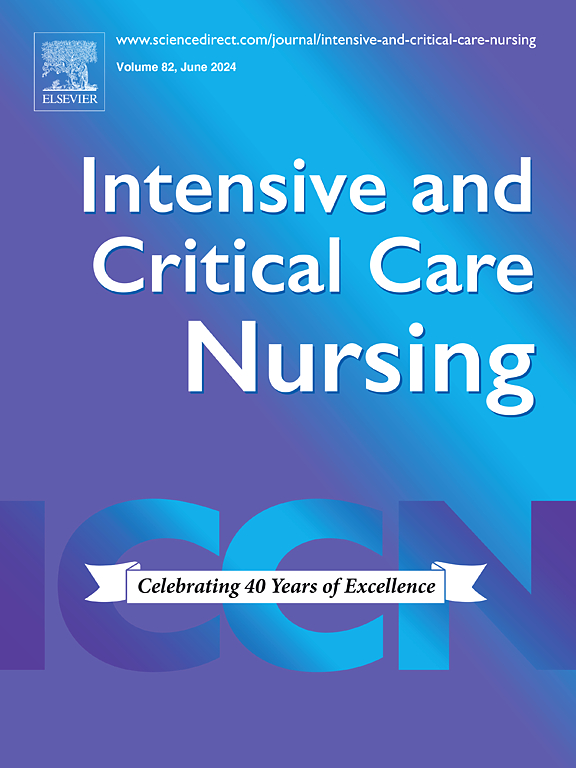Survival rates with favorable neurological outcomes after in-hospital and out-of-hospital cardiac arrest: A prospective cohort study
IF 4.9
2区 医学
Q1 NURSING
引用次数: 0
Abstract
Objectives
To evaluate the survival rates with favorable neurological outcomes among patients who experienced in-hospital cardiac arrest (IHCA) and out-of-hospital cardiac arrest (OHCA).
Design
This prospective cohort study assessed 554 adult patients with IHCA or OHCA referred to Hamad General Hospital, Qatar, between February 2015 and November 2021. Neurologic outcomes were measured using the Cerebral Performance Category (CPC) score. Survival rate and neurologic status were re-evaluated at 28 days, hospital discharge, and one year after cardiac arrest (CA).
Findings
For all participants, the hospital discharge and one-year survival rates with a favorable neurological outcome (CPC ≤ 2) were 18.5 % and 19.5 %, respectively. Specifically, among patients with IHCA, the rates were 20.5 % and 19 %, while in patients with OHCA, the rates were 16.4 % and 19.9 %, respectively. Multivariate regression analysis indicated that factors male sex (OR: 2.129, 95 % CI: 1.168–3.881, P = 0.014), initial shockable rhythm (OR: 1.691, 95 % CI: 1.024–2.788, P = 0.041), and the use of ECPR (OR: 1.944, 95 % CI: 1.178–3.209, P = 0.009) were associated with increased likelihood of survival with favorable neurological outcomes at 28 days. Conversely, older age, presence of comorbidities, infection, higher APACHE II score, longer hospital stays, and undergoing tracheostomy were linked to decreased chances of survival with favorable neurological outcomes at different time points.
Conclusion
Survival with good neurological outcomes after OHCA was 20.3 %, 16.4 %, and 19.9 % at 28 days, hospital discharge, and one year, respectively. Among patients with IHCA, survival with good neurological outcomes was 20.5 %, 20.5 %, and 19 % at 28 days, hospital discharge, and one year, respectively.
Implications for Clinical Practice
Care of CA patients in a cardiac arrest center is associated with improved long-term survival with favorable neurological outcomes. Prioritizing early intervention for shockable rhythms and utilizing ECPR where appropriate could enhance patient prognosis.
院内和院外心脏骤停后神经功能良好的存活率:前瞻性队列研究。
目的评估院内心脏骤停(IHCA)和院外心脏骤停(OHCA)患者的存活率和良好的神经系统预后:这项前瞻性队列研究评估了2015年2月至2021年11月期间转诊至卡塔尔哈马德总医院的554名IHCA或OHCA成人患者。神经功能结果采用脑功能分类(CPC)评分进行测量。在心脏骤停(CA)后 28 天、出院和一年时重新评估存活率和神经系统状况:在所有参与者中,神经功能良好(CPC ≤ 2)的出院存活率和一年存活率分别为 18.5 % 和 19.5 %。其中,IHCA 患者的出院率和一年存活率分别为 20.5% 和 19%,而 OHCA 患者的出院率和一年存活率分别为 16.4% 和 19.9%。多变量回归分析表明,男性性别(OR:2.129,95 % CI:1.168-3.881,P = 0.014)、初始可电击心律(OR:1.691,95 % CI:1.024-2.788,P = 0.041)和使用 ECPR(OR:1.944,95 % CI:1.178-3.209,P = 0.009)等因素与患者在 28 天内存活并获得良好神经功能结果的可能性增加有关。相反,年龄较大、存在合并症、感染、APACHE II评分较高、住院时间较长以及接受气管切开术与不同时间点良好神经预后的存活率降低有关:结论:OHCA 患者在 28 天、出院和一年后神经功能良好的存活率分别为 20.3%、16.4% 和 19.9%。在 IHCA 患者中,28 天、出院和一年后神经功能良好的存活率分别为 20.5%、20.5% 和 19%:临床实践的启示:在心脏骤停中心救治心脏骤停患者可提高长期存活率,并获得良好的神经系统预后。优先考虑对可电击心律进行早期干预,并在适当的情况下使用 ECPR 可以改善患者的预后。
本文章由计算机程序翻译,如有差异,请以英文原文为准。
求助全文
约1分钟内获得全文
求助全文
来源期刊

Intensive and Critical Care Nursing
NURSING-
CiteScore
6.30
自引率
15.10%
发文量
144
审稿时长
57 days
期刊介绍:
The aims of Intensive and Critical Care Nursing are to promote excellence of care of critically ill patients by specialist nurses and their professional colleagues; to provide an international and interdisciplinary forum for the publication, dissemination and exchange of research findings, experience and ideas; to develop and enhance the knowledge, skills, attitudes and creative thinking essential to good critical care nursing practice. The journal publishes reviews, updates and feature articles in addition to original papers and significant preliminary communications. Articles may deal with any part of practice including relevant clinical, research, educational, psychological and technological aspects.
 求助内容:
求助内容: 应助结果提醒方式:
应助结果提醒方式:


